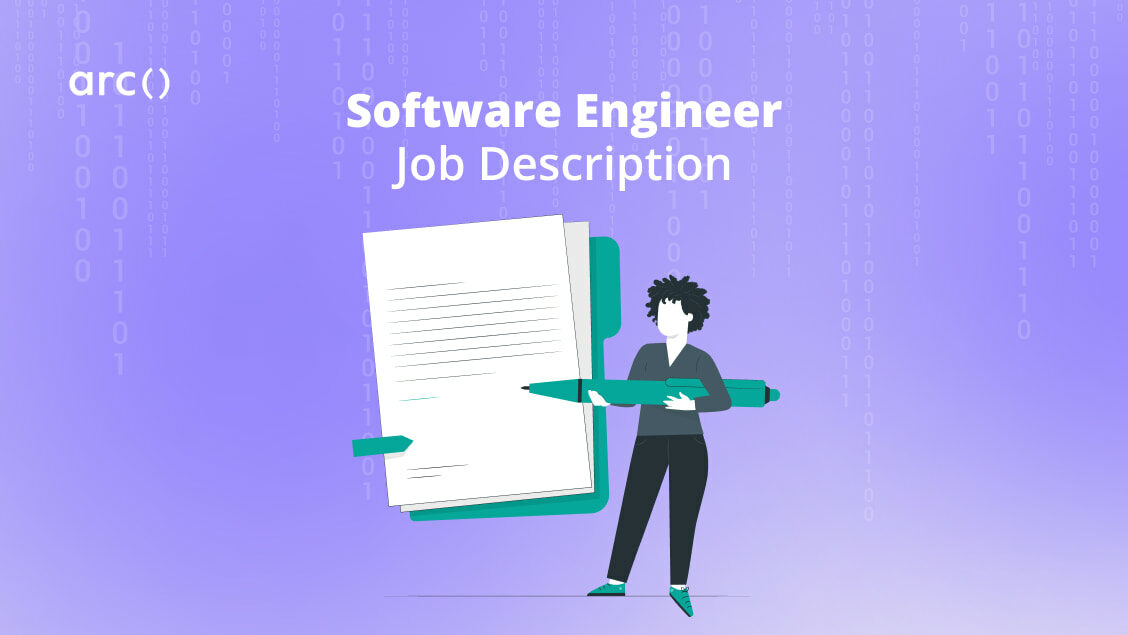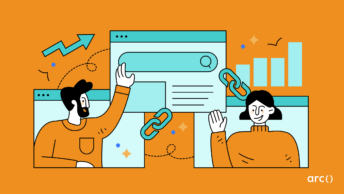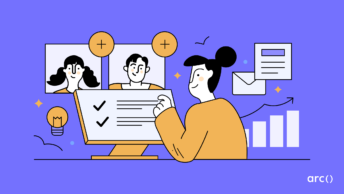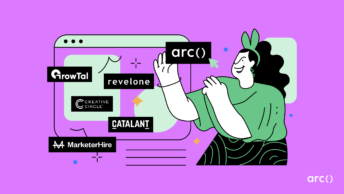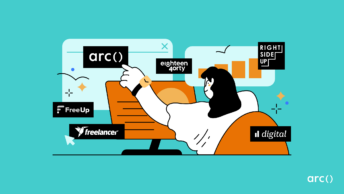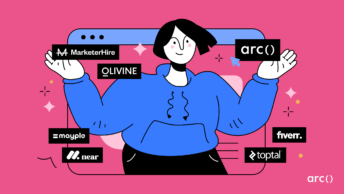Software engineering roles are notoriously hard to fill.
As it is for elite athletes, the A-est of A-List actors, or the most skilled international assassins, recruiters often need to seek out engineers rather than the other way around.
Additionally, software engineering employment is expected to increase by an impressive 22% during the 2020s in the United States alone. And, as a hiring manager or technical recruiter, you’re competing for the best talent against top companies — companies with global cachet, name recognition, and tech street cred.
Against all those challenges, how do you find skilled, relevant software engineers for your company?
The answer: by writing a software engineering job description that’s clear, compelling, and comprehensive.
Even if you’ve written dozens of JDs for engineers in the past, you may be wondering how you can get more eyes on it, better-suited candidates, and more actual applications.
Not to worry —
In this guide, we give you everything you need, including:
- Our version of a great software engineer job description template example.
- A step-by-step guide to follow on how to write the perfect job description yourself.
- Multiple job listing tips and advice to ensure developers get interested and apply.
- Answers to your frequently asked questions about JDs and software engineering careers.
Looking for top talent fast? See how Arc can help you:
⚡️ Find developers, designers, marketers, and more
⚡️ Freelance or full-time remote + fully vetted
⚡️ Save up to 80% with global hires
Hire top talent with Arc risk-free →
Sample Software Engineer Job Description Template
Before we get into how to write a job description for software engineer positions, here’s a solid template you can use as an example.
Feel free to copy, paste, and edit this sample to your needs!
Senior Fullstack Software Engineer, Node/Angular (Remote) About Us Focus Tech Solutions is a New York City-based startup taking personal productivity to the next level with our array of applications and research into secure neural implant technologies. You’ll be joining a globally distributed team working on cutting-edge development with the goal of making humans more efficient and more effective. What You’ll Do As a senior software engineer at Focus Tech Solutions, you’ll help us turn anonymized data and large data sets into actionable insights and intelligence to further our goals of improving human productivity. You’ll work with product owners and technical leads while leading a team of engineers and developers to continuously evolve our products and services without sacrificing quality. Responsibilities • Collaborate with stakeholders while leading a team and deploying code releases frequently without downtime. • Assist in architecting our current and future large-scale web and mobile applications. • Work with the machine learning team to implement insights and tests. • Continue building and scaling our applications while ensuring high availability and high reliability connections with our neural implant hardware. Must-Have Qualifications • 3+ years of experience using Node.js and Angular, especially with server-side rendering. • Significant experience maintaining and creating public APIs. • Knowledge of CI/CD systems and zero downtime deployment techniques. • Strong leadership skills, problem-solving skills, analytical skills, and communication skills. • Ability to work at least 4 hours per day overlapping with EST. Nice-to-Have Qualifications • 2+ years of experience with ExpressJS-based frameworks. • Some experience with Ruby, Ruby on Rails, GraphQL, and/or MongoDB. • Great interpersonal skills and intercultural communication abilities. • Past experience working in a fully remote environment. • Ability to function in and lead a Scrum-based Agile environment with frequent code releases. Compensation & Benefits • Competitive base salary, $160,000 – $210,000 DOE • Unlimited paid vacation • Paid parental leave • Stock options & retirement plans • Yearly remote work stipend • Medical, dental, and vision insurance • Paid gym membership and self-development courses Get In Touch! We’re a great team with a wholesome company culture emphasizing work-life balance, talking our issues out, and helping each other proactively and enthusiastically! If you want to take your engineering career to the next level while working on a team and for a company that cares about its employees and the world around them, reach out to us today!
One thing to keep in mind — there is no single correct way to do this. As you’ll see, our sample software engineer job description template above hasn’t implemented many of our suggestions below (mostly for sake of time and space).
Do what makes sense for the company you work for and the amount of information you have on the offered position!
Check out our entire set of tech job descriptions and choose the one which fits your hiring needs best:
- Software Engineer Job Description
- Python Developer Job Description
- Front-End Developer Job Description
- Angular Developer Job Description
- Back-End Developer Job Description
- Cloud Architect Job Description
- JavaScript Developer Job Description
- AWS Cloud Engineer Job Description
- AWS Cloud Practitioner Job Description
- AWS Cloud Architect Job Description
- Scrum Master Job Description
- Full Stack Developer Job Description
- Node.js Developer Job Description
- Cloud Engineer Job Description
- DevOps Engineer Job Description
- Web Developer Job Description
- React Developer Job Description
- Ruby on Rails Developer Job Description
- Agile Product Owner Job Description
- Agile Project Manager Job Description
- Remote Developer Job Description
Or, say goodbye to writing job descriptions altogether with HireAI. Discover top remote developers instantly without manual searching and screening. Try HireAI now!
How to Write a Software Engineer Job Description
Now that you’ve seen what an awesome job ad for SWEs looks like, let’s go over each area point by point.
One thing to note before we begin, though: treat your job description as an applicant ought to treat their resume. That is to say, the most important and relevant information up top.
While we stand behind the order of sections we outline below, use it as a starting point, only. For example, if you’re hiring for Netflix or Facebook, you need not open with a description of the company. Likewise, don’t feel obligated to include everything we list, either — a too-long job description can be as much of a turn-off as one that is too short!
1. Job title
The job title comes first, naturally, and it plays a particularly important role. Before a candidate sees a full job description for a software engineer, they’re on a job board, like LinkedIn, Indeed, or ours here at Arc. That means they see the job description’s title among a sea of other titles.
All of these titles in the job boards’ search results are vying for each candidate’s attention. To get them to view the software engineering job description you’re currently working so hard on, they’ve got to be compelled to click through from the main search page.
Which means, a powerful job description title is super important.
Let’s look at two examples of job description titles:
Bad Example:
Software Engineer
Good Example:
Senior Software Engineer – Cloud Security – Front-End (Remote)
There is something to be said about short titles, to be sure. For the most part, however, just saying “Software Engineer” in the job title won’t cut it. After all, it’s so broad. What kind of software engineer? What seniority level? This type of title is just marginally better than advertising a “tech job.”
Instead, qualify it with essentials, such as:
- Seniority level (e.g., junior, senior),
- Type of software engineer (e.g., full stack, back-end, front-end), and maybe
- Which area or sub-field of software engineering (e.g., mobile applications, web, security).
To make it more descriptive, you can also include:
- Required languages, frameworks, or technologies (e.g., Java, machine learning),
- Location (e.g., remote, on-site, hybrid),
- Company name (though many job boards already include that in the search results), and
- Company division (e.g., User Growth, Partnerships, Reliability)
Read More: How to Find Software Engineers: The Complete Guide
2. About the company
As a recruiter or hiring manager, you want qualified candidates to apply for the job. But, before you can do that, they need to know who they’ll be working for. Don’t get bogged down in details here. Make it a single paragraph or two highlighting the products or services your company creates, the industry your company is in, and a bit about the company culture.
Your goal is to get them to read further down the page. So, think about what sets your company apart. Are you backed by well-known VCs? Do you care about their work-life balance and mental health? Has your company won prestigious awards? Do you prioritize diversity, equity, inclusion, and accessibility?
If so, mention it!
Here’s a simple-yet-compelling full stack software engineer job description example from Ollie I found on LinkedIn:
Ollie was born with the mission of improving the lives of pets and pet parents nationwide. We make human-grade pet food, tailored for each dog’s nutritional needs, and deliver directly to our customers’ doors. Through Ollie’s carefully crafted meals, dogs can truly live their healthiest, happiest lives.
We are a U.S. based distributed team and are backed by the same venture capital companies behind Instacart, Warby Parker, Glamsquad, Mirror, Prose, and Allbirds.
Clear, concise, a few instantly recognizable dropped names, and a mission which dog-loving engineers can get behind. 💪🏼
Most software engineers don’t need or want to know your company’s entire history or the founders’ life stories. Especially as the first thing they read. But, if they do, simply link them to the appropriate pages (e.g., “About us,” “Mission statement,” “Meet the team”) on your company website and move on!
3. Role summary
You’re hiring software engineers, and software engineers know the essentials of what the job entails.
But, what does it mean for you?
Write a short paragraph giving a high-level overview of the job. Think to yourself: how would a software engineer describe their job to someone they’re meeting for the first time at a tech conference?
Here’s a great example job description role summary from GMV via LinkedIn:
The Role:
We’re looking for a strong Full-Stack Software Engineer to join our team. Someone who’s eager to work in an environment with a diverse ecosystem of applications: web apps and services, native mobile apps, high-level embedded apps, network programming, Actor model (Akka.net), messaging systems, streaming data (Kafka), relational databases, etc. We don’t expect incoming engineers to have experience/expertise in all of these areas but we seek those who are looking to learn new things and have confidence in their own ability to get up to speed quickly.
Common headings for this section are: “Role summary,” “About the job,” and “Job summary.”
Read More: How to Implement a Welcoming Software Developer Onboarding Process
4. Duties and responsibilities
On to the everyday, the nitty gritty: what can your prospective engineering candidate expect to do on the job?
This doesn’t necessarily have to be a section separate from the role summary above. Rather, it can be a continuation of that — but make it a bullet point list to help it stand out. Mention tools they’ll use, processes they’ll be responsible for implementing, and general daily activities, at the very least.
Here’s a great example from a back-end engineering role at Spotify via their internal job board:
Some examples of work you can expect to do if joining us:
- Setup and run A/B tests for Search improvements and innovation.
- Design APIs and create new backend services that are scalable and future proof
- Engage with multiple stakeholders, including members of the search teams and clients of search platform
5. Must-have skills and experience
Known as “core qualifications,” “requirements,” “job experience,” or “what you’ll bring,” among other things, this is where you’ll list out the necessary abilities and expertise candidates must have to be considered. Use a bulleted list here, as well.
Here’s a great example from an Lyft job post for a Back-End Software Engineer taken from their Greenhouse job board:
Experience:
- 4+ years of software engineering industry experience
- Experience with object-oriented programming
- Experience in distributed systems
- Experience working with databases, relational or NoSQL
- Write clear, scalable and clear design documentation
- Design, build and improve a set of team owned components
Try not to go overboard here. Don’t include skills or years of experience in this area if it’s not a certain dealbreaker otherwise. Also, don’t ask for absurdities such as “at least 15 years of blockchain experience.”
Read More: 10+ Software Engineer Interview Questions to Find Top Dev Candidates
6. Nice-to-have skills and experience
Similar to the previous section, include a list of skills and expertise the ideal candidate might possess to stand out.
Here’s a sample from a staff software engineer at Google from their careers page:
Preferred qualifications:
- Master’s degree or PhD in Engineering, Computer Science, or a related technical field
- 3 years of experience in a technical leadership role leading project teams and setting technical direction
- 3 years of experience working in a complex, matrixed organization involving cross-functional, and/or cross-business projects
- Experience with building diagnostic tools and processes
- Experience designing reliable, fault-tolerant, and high performance distributed systems
- Experience with large-scale machine learning systems (e.g., training and serving for computer vision, speech recognition, natural language processing, machine translation models, etc.)
Pro tip: Show off your company culture here, too! For example, mention they’ll get bonus points if they love dogs when you have a dog-friendly office.
7. Requirements on education or certifications
Hopefully you don’t need to include education requirements in your job description. After all, the tech industry and Silicon Valley are full of software engineers who are self-taught or have taken non-traditional educational paths (e.g., coding bootcamps). Focusing on results and what the candidate will be expected to achieve is the way to go, in general.
But, if your company does require it, by all means. Explain the lowest-level of education required (e.g., bachelor’s degree, master’s degree) along with the areas of study (e.g., computational mathematics, computer science).
Depending on your company’s sector and what the role involves, you may require candidates to have a particular license, certification, or clearance. This is especially true for cybersecurity roles (CISSP or CISM, for example) or if your organization works with the government in some way (e.g., facility security clearance, E-Verify).
Read More: How Much to Hire a Software Developer: Freelance vs Full-Time Costs
8. Working time and location
Meatspace or cyberspace or some of both?
For on-site engineering roles, you’ll most likely have a special field at the very top of the job description to include the city where the job is located. However, if you will consider (or are requiring) a remote employee or hybrid arrangement, make sure to specify.
Must they be within driving distance for important, in-person meetings? Will you provide relocation services and assistance? Do you expect the candidate to travel to and attend industry events?
Pay special attention to time, as well — do you require prospective engineers to have a complete overlap with the engineering team’s work schedule or just a few hours? Maybe you’re completely asynchronous? Engineers often value their deep work time, so it’s both a captivating perk and useful information if you offer this!
If you’re only able to hire employees who have the authorization to work in a particular country, don’t forget to note that, either. Finally, inform applicants of any potential work outside of regular hours, such as on-call requirements or when your engineering team performs weekend releases.
9. Compensation, perks, and benefits
This is pretty self-explanatory, so I’ll simply give you some of the common and most-appreciated items to consider when speaking of both paid and unpaid compensation:
- Annual salary range
- Paid time off (PTO) policy
- Health coverage: medical, dental, vision, mental health, etc.
- Reimbursements for professional growth
- Referral bonuses
- Software and hardware
- Remote work office stipend
- Ownership, equity, and/or stock options
- Performance bonuses
- 401(k) & retirement savings programs
- Spending accounts: FSA, HSA, etc.
- Sick leave and bereavement policy
- Parental leave policy
- Company retreats and team bonding activities
- Subscriptions: gym membership, magazines, newspapers, etc.
- Regular social events, company lunches, and happy hours
- Tuition reimbursement
Read More: Hiring In-House vs Remote Developers: Cost & Competitive Advantages
10. Looking ahead: 1 month, 3 months, 1 year, etc.
This isn’t so necessary, of course, but it is a welcome addition to any software engineer job ad. Not only does it help the candidate understand better what’s expected of them, but it also gives them the initial definition of what success looks like for their role.
Here’s a great example from a senior software engineer job description at Boulevard via LinkedIn:
Within 1 month you’ll…
- Graduate from Boulevard’s platform training course
- Connect with the payments team and with key payments stakeholders across the company
- Learn and understand the current engineering workflow
- Learn and understand the core business objectives and areas for improvement
- Become familiar with the Payments roadmap
Within 3 months you’ll…
- Suggest best practices and improvements for payments infrastructure and processing
- Help develop safeguards to identify fraudulent merchant transactions through pattern matching or suspicious activity
- Build dashboards for important metrics and provide important merchant statement backgrounds while being pragmatic about the data
- Design and develop software interfaces, microservices, and/or system abstractions to allow our teams to move quickly & efficiently and optimize the way payments are made.
- Be able to independently field requests and organize process for payments projects, prioritizing recurring requests from customers
- Fully understand your contributions to the Payments roadmap
After 6 months you’ll…
- Implement suggested improvements and best practices
- Be a key part of a growing team with potential leadership opportunities
- Show a clear, scalable path to effectively address enterprise client needs and expand our market share internationally or to other markets
- Expand your knowledge for your own career development and work on countless opportunities that have a meaningful impact on the business’s bottom line
11. Other job description sections to consider
While the above fields will ensure you have quite the comprehensive job description, you may find it helpful or relevant for your company or situation to include some other information.
Here are a few to consider:
Company culture – You might have mentioned a vibrant and inclusive workplace environment in your company summary at the beginning. But, if you’re proud of how great and anti-toxic your organization’s culture is, by all means, show it off! Use a paragraph or two to cover some of the highlights.
How to apply – Many job boards have buttons which lead straight to application forms or simply ask candidates to attach their cover letters and resumes. Include this when you have an alternative hiring process in place.
Point of contact – Additionally, you can leave your name and contact information in case applicants have questions about the role before applying. It’s not only a nice touch but also a great way to get feedback on how well you’ve described the position in the job description!
Legalese – You may be required by your local or national laws to include disclaimers about how you’ll process their data, disclosures of privacy, affirmative action plan/equal employment opportunity (AAP/EEO) statements, etc.
Tech stack – What’s under the hood? Software engineers love to know what they’ll be working with, even if they don’t necessarily need to understand the entire infrastructure for their particular role.
Our ideal candidate is – This is similar to the “nice-to-haves” section above, but framed in a different, more human way. Here you can list soft skills (e.g., excellent time management, strong interpersonal skills), causes or interests you’d appreciate they’re passionate about, and so on.
Employment type – Probably unnecessary for full-time employment, but definitely useful to state if the role is a contract, part-time, or
Internal position title – While you want to be sufficiently descriptive in the software engineer job description title, the prospective candidate’s professional title might be something else entirely.
Screening – Inform candidates of any required pre-employment drug tests or credit checks, if applicable.
Hiring process – Let applicants know what to expect in the upcoming weeks. Are there live coding sessions or whiteboard interviews in the pipeline? How many steps until the final round?
Key dates – If it’s not immediately clear, add when the job was posted and when the job ad is due to expire. If applicable, add a starting date for the position, especially if it’s months away.
Read More: Freelance vs In-House Developers: Pros & Cons of Hiring or Contracting
You can also try Arc, your shortcut to the world’s best remote talent:
⚡️ Access 450,000 top developers, designers, and marketers
⚡️ Vetted and ready to interview
⚡️ Freelance or full-time
Try Arc and hire top talent now →
Tips for Writing a Compelling Job Description for Software Engineers
1. Be inclusive in your software engineering job description
Make sure your job posting isn’t discriminatory. Inclusive language is important, so review the wording in the job title and role description for language that might be unconsciously biased, if not overtly, particularly against women and people of color.
While usually unintentional, there are problematic words and phrases in job descriptions, particularly in the tech industry. For example, terms like ninja, best of the best, stock options, and takes risks can both attract men and turn away women. Additionally, places using lots of corporate jargon tend to imply the internal culture is an old-boys’ club, which will put off many great non-white and/or non-male applicants.
To help parse your software engineering job description text for biased terms and give you inclusive alternatives, check out the free and simple Gender Decoder or the feature-rich Textio.
2. Use text formatting to make your JD easy to read
If a potentially perfect-fit software engineering candidate is enticed by your job title to click into the listing description, don’t lose them now. Ensure they’re greeted by an eye-pleasing document that is easy to scan rather than huge blocks of text.
Use text formatting to accomplish this — that’s what it’s there for!
Use headings (H2s) and subheadings (H3s, H4s) to let them quickly find sections that interest them. Highlight important information in bold. Link to specific pages on your website if it makes sense. For job description areas with lists, say the employee benefits or position responsibilities, use a bulleted list rather than a long paragraph.
Read More: Good vs Great Developers: How to Tell the Difference & Hire the Best
3. Speak directly to them
Use the second person singular point of view in your writing to be more engaging.
For example, rather than saying:
“The ideal candidate for this position is…”
Use this instead:
“You’d make a great fit if you have…”
4. Include specific instructions when applying
Towards the end of your software engineering job description, consider adding a specific instruction for them as they apply. This trick is great for filtering out applicants who don’t read the job description closely enough, which may be especially useful if you’re inundated with applications.
For example, tell them to include the job ID number in the subject line of their email. Or, you could ask them NOT to use the apply button on the job board and instead send their docs to a designated email address. If you go with this option, add it in the “How to apply” portion of the JD.
Read More: How to Build and Maintain a Distributed Software Engineering Team
5. End your software engineer job description with a call to action
Remember: your software engineer job description is meant to sell the job to the candidate. You want to convert job seekers into job applicants. So, use a strong call-to-action (CTA) at the end. Entice the reader to hit that “apply now” button by giving them a simple next step to follow.
Well, that’s all for now!
Hopefully this post has helped you learn how to write a software engineer job description. If you have any feedback or questions, let us know in the comments below, and thanks for reading!
Oh, and if you’re looking to hire a skilled software engineer, give Arc a shot:
You can also try Arc, your shortcut to the world’s best remote talent:
⚡️ Access 450,000 top developers, designers, and marketers
⚡️ Vetted and ready to interview
⚡️ Freelance or full-time


